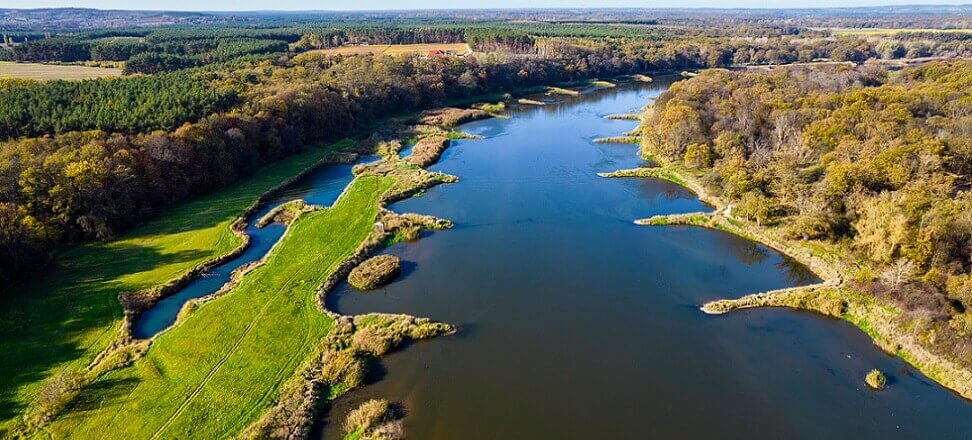The Oder is a river that after the events of 2022. requires special attention and focus on ways to protect it. To this end, a service has been set up to present monitoring results on a continuous basis. It presents the basic physical and chemical parameters of the Oder River and Gliwice Canal. The results of measurements from several stations, belonging to different institutions, are overseen by the Ministry of Climate and Environment, and presented on the website of the Chief Environmental Inspectorate. How do these stations work?
Oder River – how monitoring of river parameters works
Last year’s environmental catastrophe on the Oder River showed that water level monitoring is aligned with the requirements of the Water Framework Directive (WFD) for controlling the achievement of environmental objectives, but these requirements do not apply in emergency situations. Intervention monitoring, launched by the Environmental Inspectorate, provides information that is more dense in time and space, but laboratory procedures still make it possible to present results only a few days after sampling.
On the German side of the Oder River, there are several automatic monitoring stations for some water quality parameters. They belong to various institutions and are used by emergency management authorities. These stations operate outside the relevant water quality monitoring system for the WFD, but their data were used to prepare disaster reports. Particularly important was information on diurnal variation in pH, dissolved oxygen or chlorophyll, i.e. direct and indirect indicators of photosynthesis, which – combined with information on nitrogen decline – allowed us to formulate a hypothesis about the occurrence of a toxic bloom.
The Oder River and Gliwice Canal are under constant observation. More German-like automatic monitoring stations have been installed for basic water quality parameters: temperature, dissolved oxygen, electrolytic conductivity and pH. The stations belong to various institutions: Chief Inspectorate of Environmental Protection, Institute of Environmental Protection-PIB and Inland Fisheries Institute-PIB. At the time of this text, the stations were operating: Marina and Ujazd on the Gliwice Canal, and Chałupki, Racibórz Dolny, Krapkowice, Malczyce, Bytom Odrzański and Szczecin Widuchowa on the Oder. The station in Trestna was still being prepared for launch.
All data is collected on a single server, operated by the GIOŚ, and the Ministry of Climate and Environment is responsible for coordinating the system. After a period of hardware acclimatization and software customization, on May 30, 2023. A website has been launched where these data are published. They are in the form of line graphs for the last 24 hours. It is possible to save them as a graphic file, as well as download them in .csv format. Some parameters from individual stations are not available due to unfinished sensor calibration.
Oder is monitored on an ongoing basis. The first results made available coincide with data from the Environmental Protection Inspectorate – the lowest salinity is close to the source and mouth, and the highest is in the tributary area from the Upper Silesian and Legnica basins. Changes in this parameter are significant. In contrast, temperature or pH are quite stable and their diurnal variation is often barely noticeable. This is due to the inertia of the parameters of the still relatively large mass of water flowing down the Oder River. It should also be remembered that in such a deep river as the Oder River, the distance of the sensor from the bottom and the surface can be important.
The GIOŚ stresses that these measurements should still be considered pilot measurements, and calibration of the equipment is not yet complete. Data may not be obtained according to the methods used for manual operations, the results of which are published on the site. Also, the fact that they are made available in near real time, and therefore without verification, may affect their credibility.
Note that automatic water quality sensors are susceptible to disturbances, so individual readings that deviate from others may be the result of a malfunction in the instrumentation. For example, a measurement indicating the water temperature in Malczyce dropped to 0°C at 1pm on June 6, while at 11am and 4pm it was approx. 21°C, should be interpreted as a reading disturbance rather than a sudden thermal anomaly. Such situations are easy to grasp and interpret. Taking this into account, it can be considered that the results of automatic monitoring serve to spot disturbing phenomena more efficiently. Even if the results of the ongoing measurements are not perfect, thanks to them there is a chance to avoid another disaster, and the Oder may one day return to its pre-2022 state.
You can learn more about what is the state of the water in the article: How bad is bad water? About the devil being in the details.

 Polski
Polski






